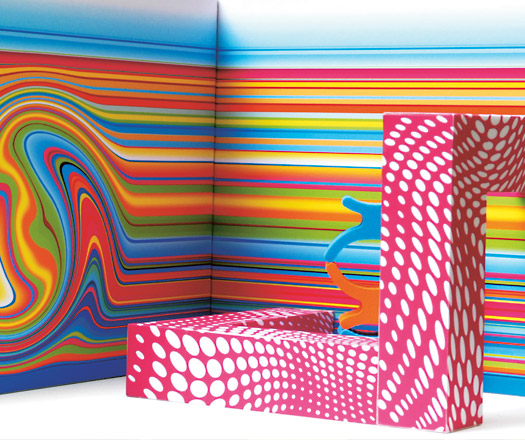
Hypnotised by space and the four walls that define it, designers rarely looked down at the floor. But modular flooring has changed all that by creating a fifth wall and the opportunity for a complete design experience.
This article appears in the latest issue of InterfaceFLOR’s designspace magazine. You can get your copy in the October issue of DQ Magazine, Issue #31. Words by Kim Powell. Images – COLORFLAG collection by Markus Benesch.
Story continues below advertisement
It’s not so surprising, really, that designers have for so long neglected the floor. We are upright creatures and tend not to look down, but up – at the walls – and see a canvas on which to project emotion through colours and patterns.
Anyway, conventional wall-to-wall carpets traditionally celebrated repetition of patterns – a kind of ready-made experience, a bit like living under socialism where everything was the same for everyone.
Story continues below advertisement
Well, if that was socialism, modular flooring is free enterprise where firms are free to create their own environments, where the floor can be customised and where things don’t have to be the same for ever.
Modular flooring is like a new tool box for designers, offering not just a new design palette for the floor but the opportunity for a whole new experience in the work environment.
Story continues below advertisement
Carpet tiles were introduced more than 50 years ago, initially to utilise post-industrial waste. At first, they imitated broadloom, but driven by InterfaceFLOR’s spirit of innovation, they began to emerge as a design tool.
The carpet tile offered a totally new experience over broadloom. Instead of a repeated single pattern, flooring could now offer an infinity of experiences and constant stimulation to replace the inevitable monotony of an expanse of uninflected carpet.
But this implied an even more revolutionary possibility. Since traditional carpet was repetitive, it followed that spaces had to be defined by the walls, by furnishings or room dividers. The carpet tile, however, gives designers the flexibility to define spaces using a mix of tiles – making the floor the fifth wall.
To read the rest of this and other great articles get your copy of designspace inside Issue #31 of DQ magazine, out October 2.